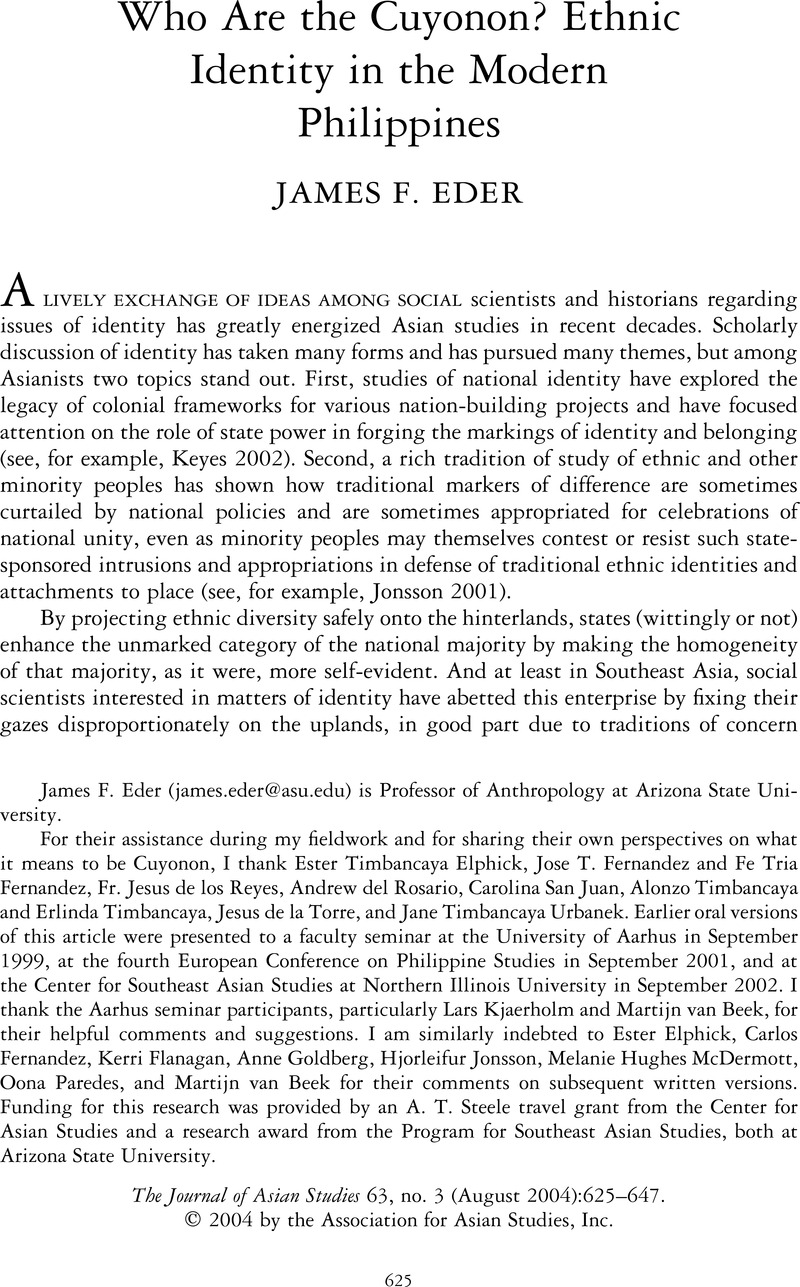Crossref Citations
This article has been cited by the following publications. This list is generated based on data provided by Crossref.
Dressler, Wolfram H.
2006.
Co-opting Conservation: Migrant Resource Control and Access to National Park Management in the Philippine Uplands.
Development and Change,
Vol. 37,
Issue. 2,
p.
401.
Eder, J. F.
2006.
Land use and economic change in the post‐frontier upland Philippines.
Land Degradation & Development,
Vol. 17,
Issue. 2,
p.
149.
Dressler, Wolfram
and
Turner, Sarah
2008.
The Persistence of Social Differentiation in the Philippine Uplands.
The Journal of Development Studies,
Vol. 44,
Issue. 10,
p.
1450.
Tannenbaum, Nicola
2009.
The changing nature of Shan political ritual and identity in Maehongson, Northwestern Thailand.
Contemporary Buddhism,
Vol. 10,
Issue. 1,
p.
171.
Dressler, Wolfram
and
Pulhin, Juan
2010.
The shifting ground of swidden agriculture on Palawan Island, the Philippines.
Agriculture and Human Values,
Vol. 27,
Issue. 4,
p.
445.
Dressler, Wolfram H.
and
McDermott, Melanie Hughes
2010.
Indigenous Peoples and Migrants: Social Categories, Rights, and Policies for Protected Areas in the Philippine Uplands.
Journal of Sustainable Forestry,
Vol. 29,
Issue. 2-4,
p.
328.
DRESSLER, WOLFRAM H.
and
FABINYI, MICHAEL
2011.
Farmer Gone Fish'n? Swidden Decline and the Rise of Grouper Fishing on Palawan Island, the Philippines.
Journal of Agrarian Change,
Vol. 11,
Issue. 4,
p.
536.
Kaufman, Stuart J.
2013.
The limits of nation-building in the Philippines.
International Area Studies Review,
Vol. 16,
Issue. 1,
p.
3.
Dressler, Wolfram
de Koning, Jessica
Montefrio, Marvin
and
Firn, Jennifer
2016.
Land sharing not sparing in the “green economy”: The role of livelihood bricolage in conservation and development in the Philippines.
Geoforum,
Vol. 76,
Issue. ,
p.
75.
Fabinyi, Michael
Dressler, Wolfram
and
Pido, Michael
2019.
Access to fisheries in the maritime frontier of Palawan Province, Philippines.
Singapore Journal of Tropical Geography,
Vol. 40,
Issue. 1,
p.
92.
Zuckerman, Charles H.P.
and
Enfield, N.J.
2022.
The unbearable heaviness of being Kri: house construction and ethnolinguistic transformation in upland Laos.
Journal of the Royal Anthropological Institute,
Vol. 28,
Issue. 1,
p.
178.
Satizábal, Paula
Dressler, Wolfram H.
Guieb, Eulalio R.
Varquez, Jessie G.
and
Fabinyi, Michael
2022.
Seascape shadows: Life in the ruins of the edible bird's nest harvest in northern Palawan, the Philippines.
Environment and Planning E: Nature and Space,
Vol. 5,
Issue. 4,
p.
1966.



